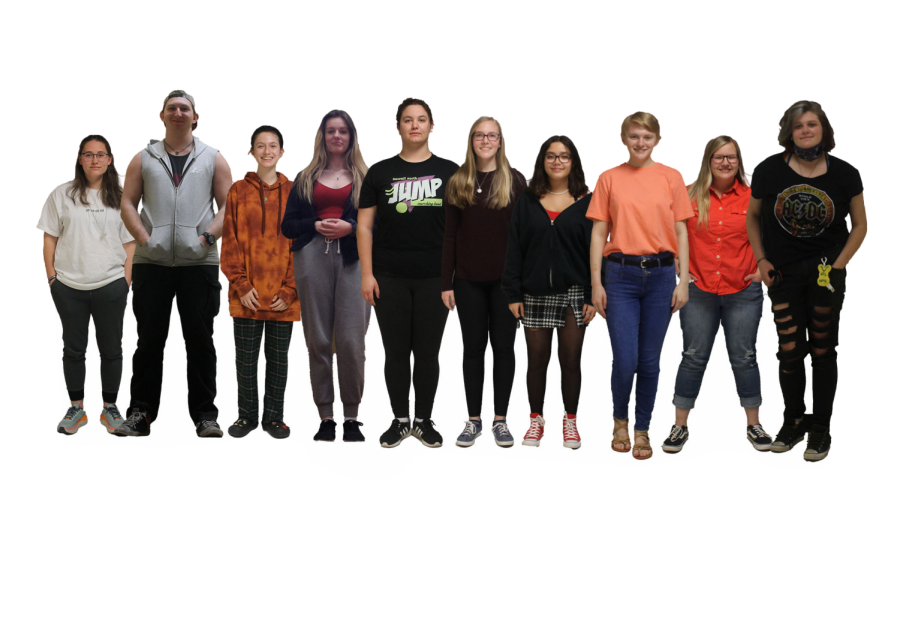How Psychology Affects Aesthetics
Credit to Photo Illustration by Sarah Williams
Published: April 2, 2021
Humans are known to be social beings and for centuries have worked together in families and tribes in order to survive. This instinct to be a part of a group in this way is still present in our need of belongingness.
“From an evolutionary perspective, being a part of a group was the difference between surviving and dying,” FHN psychology teacher Sean Fowler said. “You were born into a group, you live in that group, and that group would determine your success or lack thereof.”
Although humans are no longer categorized into groups the way they used to, many still strive to feel connected to a group. In the past decade, the term aesthetic has been used more frequently to describe one’s interests and style. This allows many to express themselves while also being connected to a group. Different aesthetics are often popularized through visual social media like TikTok and Pinterest, where people are able to express different aspects of their aesthetic.
“I like to hop around aesthetics a lot, but I think my main aesthetic would be like a soft girl,” freshman Hailey Zhang said. “I don’t base my friends off people with similar styles or fashion senses. It might be subconscious, but a lot of my friends do have the same style as me.”
Since aesthetics can easily be shown through attire, it’s easy for people to connect to one another after visually seeing their similarities. These similarities that categorize people is a way they actually find themselves. They are able to see themselves in one another, causing them to fulfill social needs but also better understand themselves.
“Being a part of a group is fundamental to yourself,” Fowler said. “A lot of individualism is based on what groups we are a part of. We signal our individuality by signaling what groups we’re a part of.”
Despite these groups, many still struggle with feeling like they do belong.
“We’re looking to belong, I would argue, in superficial ways since our need of belonging is not being met through the way it originally was,” Fowler said. “We find it by being a part of a movement, being fans of a music or music artists, having a particular style that signals who we are.”
During a time where more human interactions are formed online, aesthetics have been able to be shared among thousands, allowing people to bond over these shared experiences and interests. Although it’s wondered if these digital connections are enough to fulfill social needs, especially when in-person socialization is limited.
“As people are feeling less and less connected in person, they’re more likely to find groups online in order to feel connected,” Fowler said.
Overall aesthetics have an important purpose in mainstream media as a way for people to express themselves within communities. This helps one feel like they belong and open themselves up to connections with others.
“We want to be a part of a group to feel that we belong,” Fowler said.





![FHN Holds Prom at Old Hickory Country Club [Photo Gallery]](https://FHNtoday.com/wp-content/uploads/2024/04/Brewer_stopmotion-9-300x200.jpg)

![FHN Students Watch the Solar Eclipse [Photo Gallery]](https://FHNtoday.com/wp-content/uploads/2024/04/4.8.24-solar-eclipse_-300x200.jpg)
![FHN Boys Varsity Volleyball Team Goes Against Troy [Photo Gallery]](https://FHNtoday.com/wp-content/uploads/2024/03/IMG_7545-300x200.jpg)
